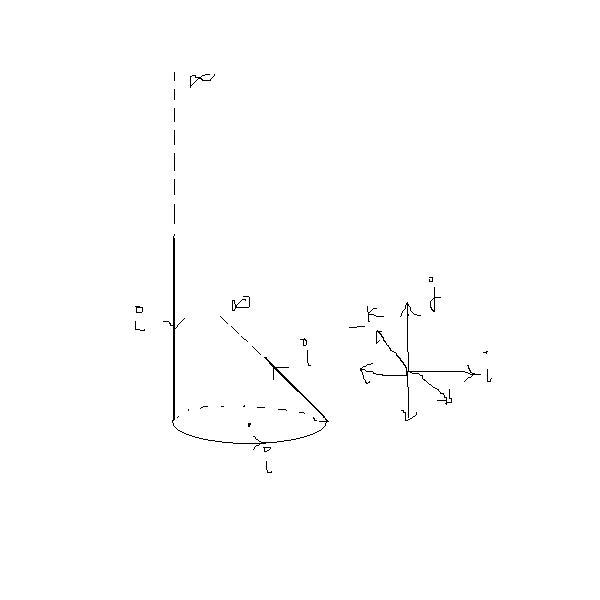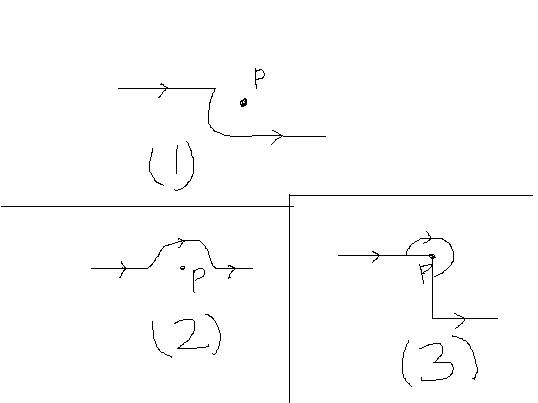the reqd ratio is -pi/2:pi/2:(3pi/4)-1/2
Q Fig. shows three cases: in all the cases the circular part has radius R and straight ones are infinitely long for same I.The magnetic field in the three cases has the ratio?
Fig follows.........
-
UP 0 DOWN 0 0 17

17 Answers
@honey ........ [1] so sweet of you:)
par rehle bolna chaiye tha..
[13] [13] [13] [14]
this is also simple only... jus perpendicular so u can do pythagorus...
in other cases apply paprallel law etc..
par woh sab nahi puchhega jee mein...
jee wale achhe hai.. hume on-exam calculation leke pareshaan nahi karte [3]
ya the one given by honey was a much simple one. i mean in that case it works but not always. anyways thanks.
1 srait wire in x-y plane .. the other one in x-z plane....
circular portion also in x-z plane...
ab nikalo...
do it... u will have no more doubts then [1]
@strat..
woh toh yaha pe upar ya niche hoga isiliye koi tension nahi hai..
i will give one ex... ruko..
ofcourse vector sum! .... or else how will u combine two mag fields?
mag fields are vectors...
ys skygal u r right in 2nd case the B due to two wires get cancelled
no i am little wrong...
2nd case mein straight wire ka koi function hi nahi hai..
arey honey... noticed a simple thing??
in all the three cases straight wire ka B same rahega/
the circular part is jus changing from quadrant to a semi-circular to a 3/4th part.....
i culdnn get your third fig.
but for the first two,,, find for thr circular parts and the straight parts separately and then find the vector summation...
like see, in the first case, the left side straigght part ka koi effect nahi hoga kyonki... the point is along the straight wire...
circular part ke liye .. B's direction at P is upwards...
aur right pe jo straight wire hai uske liye bhi upwards...
B for circular part has to calculated for 1 quadrant..
and B for straight part is for half-infinite wire...
gotcha ?

